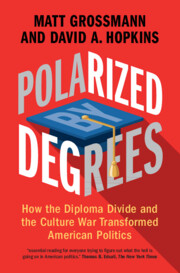209 results
The plural professional: How UN human rights experts construct their independence
-
- Journal:
- Review of International Studies , First View
- Published online by Cambridge University Press:
- 28 March 2025, pp. 1-21
-
- Article
-
- You have access
- Open access
- HTML
- Export citation
Science Communication, Paternalism, and Spillovers
-
- Journal:
- Canadian Journal of Philosophy , FirstView
- Published online by Cambridge University Press:
- 12 March 2025, pp. 1-15
-
- Article
-
- You have access
- Open access
- HTML
- Export citation
Introduction - The Idea of the artes
-
- Book:
- The <i>artes</i> and the Emergence of a Scientific Culture in the Early Roman Empire
- Published online:
- 22 March 2025
- Print publication:
- 13 February 2025, pp 1-12
-
- Chapter
- Export citation
Conclusion
- from Part IV
-
- Book:
- The <i>artes</i> and the Emergence of a Scientific Culture in the Early Roman Empire
- Published online:
- 22 March 2025
- Print publication:
- 13 February 2025, pp 372-379
-
- Chapter
- Export citation
Toutes les disciplines ont-elles les mêmes raisons de diffuser les résultats de la recherche ?
-
- Journal:
- Dialogue: Canadian Philosophical Review / Revue canadienne de philosophie / Volume 63 / Issue 3 / December 2024
- Published online by Cambridge University Press:
- 23 January 2025, pp. 399-414
-
- Article
-
- You have access
- Open access
- HTML
- Export citation
6 - The Importance (and Erosion) of Norms
-
- Book:
- Judges, Judging, and Judgment
- Published online:
- 03 January 2025
- Print publication:
- 16 January 2025, pp 112-144
-
- Chapter
- Export citation
6 - Femininities in UN Mediation
- from Part III - Subjects
-
- Book:
- The Politics of Women, Peace, and Security in UN Mediation
- Published online:
- 19 December 2024
- Print publication:
- 02 January 2025, pp 141-162
-
- Chapter
- Export citation
4 - The Science of UN Mediation
- from Part II - Practices
-
- Book:
- The Politics of Women, Peace, and Security in UN Mediation
- Published online:
- 19 December 2024
- Print publication:
- 02 January 2025, pp 89-120
-
- Chapter
- Export citation
3 - Art or Science? Narrative Struggles over the Meaning of UN Mediation
- from Part I - Narratives
-
- Book:
- The Politics of Women, Peace, and Security in UN Mediation
- Published online:
- 19 December 2024
- Print publication:
- 02 January 2025, pp 63-86
-
- Chapter
- Export citation
How Scientific Ignorance and Social Invisibility Shape the Issue of Occupational Health in France as a Nonproblem
-
- Journal:
- European Journal of Sociology / Archives Européennes de Sociologie / Volume 65 / Issue 3 / December 2024
- Published online by Cambridge University Press:
- 23 December 2024, pp. 335-364
-
- Article
-
- You have access
- Open access
- HTML
- Export citation
4 - Constructing Language Policies
-
- Book:
- Language Policy in Action
- Published online:
- 05 December 2024
- Print publication:
- 12 December 2024, pp 59-82
-
- Chapter
- Export citation
33 - Communicating Findings to Non-CA Professionals
- from Part VI - Situating and Reporting Findings
-
- Book:
- The Cambridge Handbook of Methods in Conversation Analysis
- Published online:
- 06 December 2024
- Print publication:
- 05 December 2024, pp 928-940
-
- Chapter
- Export citation
11 - Regulatory Legitimacy
- from Part III - Evaluation
-
- Book:
- An Introduction to Law and Regulation
- Published online:
- 22 November 2024
- Print publication:
- 28 November 2024, pp 321-356
-
- Chapter
- Export citation
African Studies Keyword: Science
-
- Journal:
- African Studies Review / Volume 67 / Issue 4 / December 2024
- Published online by Cambridge University Press:
- 25 November 2024, pp. 990-1010
-
- Article
-
- You have access
- Open access
- HTML
- Export citation
Chapter 12 - Expert Witnesses in the Coroner’s Court
-
-
- Book:
- A Clinician's Brief Guide to the Coroner's Court and Inquests
- Published online:
- 14 November 2024
- Print publication:
- 21 November 2024, pp 52-56
-
- Chapter
- Export citation
FROM DISCRETION TO EXPERT JUDGEMENT: RECASTING SEDIMENTED CONCEPTS IN ADMINISTRATIVE LAW
-
- Journal:
- The Cambridge Law Journal / Volume 83 / Issue 3 / November 2024
- Published online by Cambridge University Press:
- 30 September 2024, pp. 549-580
- Print publication:
- November 2024
-
- Article
-
- You have access
- Open access
- HTML
- Export citation
Cybersecurity in practice: The vigilant logic of kill chains and threat construction
-
- Journal:
- European Journal of International Security , First View
- Published online by Cambridge University Press:
- 27 September 2024, pp. 1-21
-
- Article
-
- You have access
- Open access
- HTML
- Export citation
The Value of Independence between Experts: Epistemic Autonomy and Different Perspectives
-
- Journal:
- Episteme , First View
- Published online by Cambridge University Press:
- 12 September 2024, pp. 1-17
-
- Article
-
- You have access
- Open access
- HTML
- Export citation

Polarized by Degrees
- How the Diploma Divide and the Culture War Transformed American Politics
-
- Published online:
- 05 September 2024
- Print publication:
- 05 September 2024
7 - Are Policymakers Solving Problems or Imposing Values?
-
- Book:
- Polarized by Degrees
- Published online:
- 05 September 2024
- Print publication:
- 05 September 2024, pp 241-278
-
- Chapter
- Export citation


